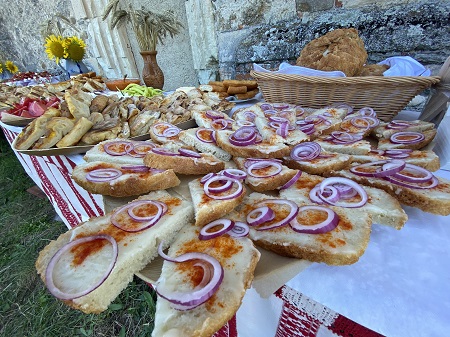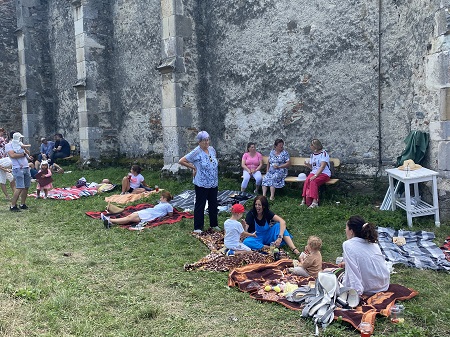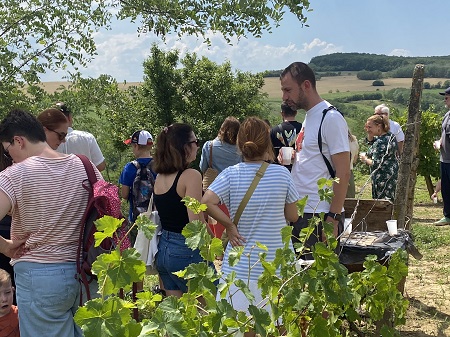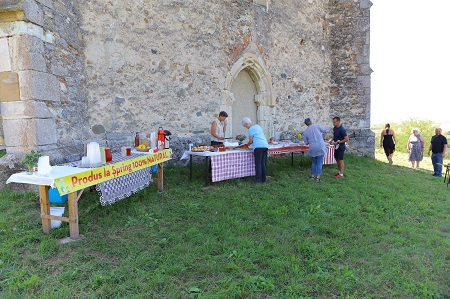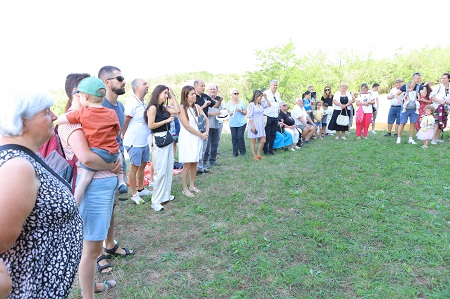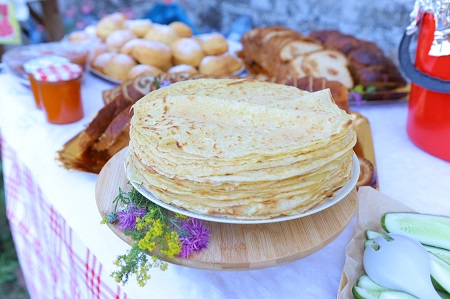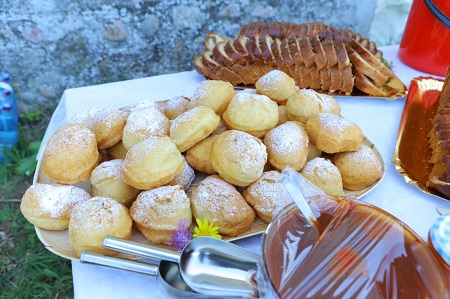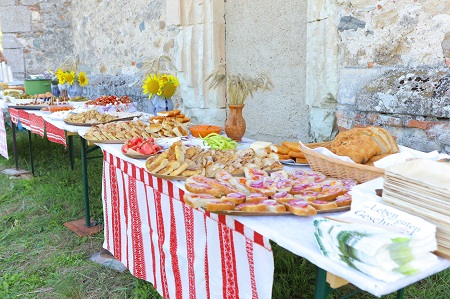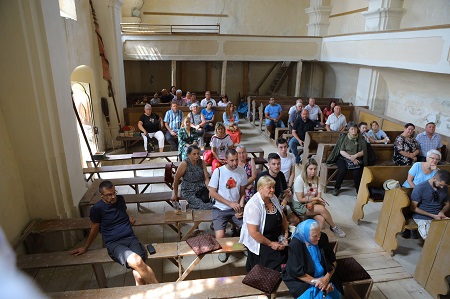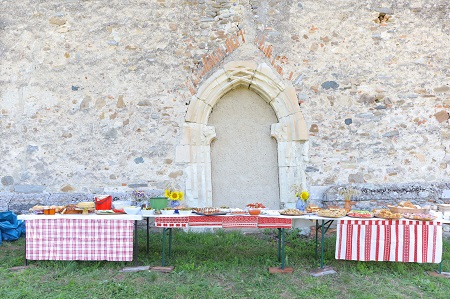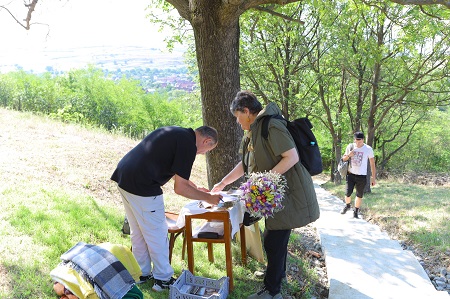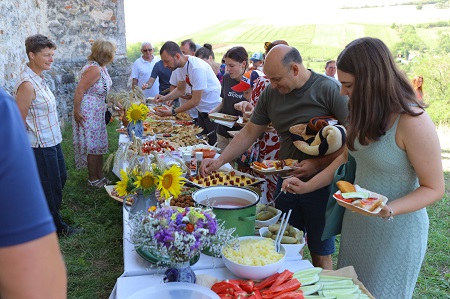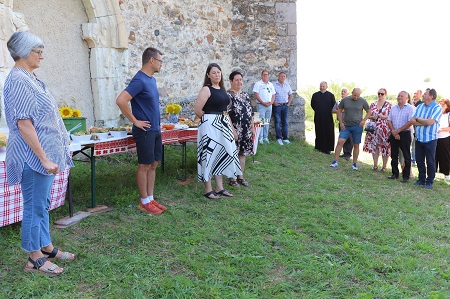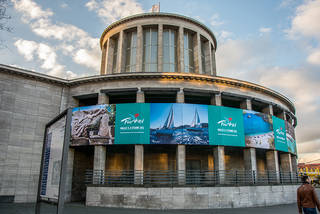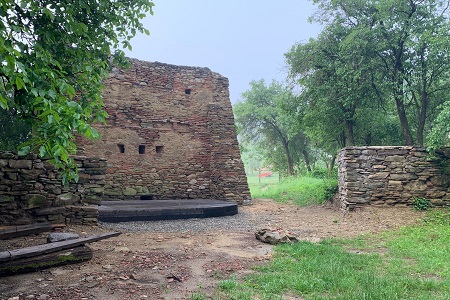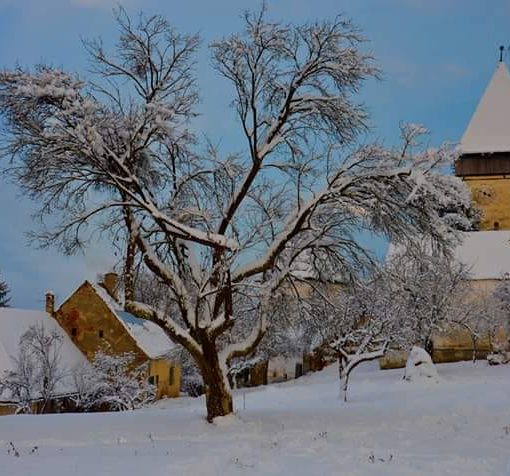Around 90 guests attended the Transylvanian Brunch in Weingartskirchen at the beginning of August.
This new format by the Fortified Churches Foundation has now reached its halfway point – about half of the planned events have already taken place. And yet, it’s clear that each event has its own unique character and stands out in its own way.
The concept is the same for all: the aim is to bring the Transylvanian Saxon fortified churches – this remarkable European cultural and historical heritage – more into the public eye through a new format. Primarily, it targets people living in Transylvania. This is particularly important because many of these buildings are not in the best condition – including the one in Weingartskirchen, part of the Mühlbach church district – and are in urgent need of help.
Such a brunch includes a rich culinary offering of local specialties, a short excursion into Transylvanian Saxon history, including a church visit, a short hike, and a quiz for young and old to reflect on what they’ve learned – all with the aim of spending the day in a special atmosphere and connecting with people interested in the preservation of fortified churches.
What was special in Weingartskirchen is that, for the first time, representatives of the local community association (HOG) from Germany showed interest in hosting such an event around their village church. This was mainly thanks to the Leister family, who moved everything into motion and organized the entire event. In the days before, people baked, cooked, fried, and prepared spreads – the long table was overflowing with delicious food. Local producers were also present – offering honey, wine, and homemade juices.
Another special feature: most of the guests were “summer Saxons” – people spending their vacation in their former hometowns and houses. This event even set a new record for participation, with around 90 visitors, two-thirds of whom were these “summer Saxons.”
Typically, over 90% of attendees at such events are young Romanian families from cities such as Sibiu, Târgu Mureș, Cluj – even Bucharest – who particularly appreciate this idyllic setting.
In Weingartskirchen, only a handful of Saxons still live there – which raises the difficult question: what will happen to the church in the future? The roof was at least repaired a few years ago, the organ is now in Prejmer (Tartlau) – but if the church is to be restored, it would require extensive work.
The informational part of the event (as well as much of the organization) was handled by Cristian Cismaru, managing director of the Fortified Churches Foundation. In his opening remarks, he also welcomed local Orthodox priest Cosmin Solomon and district dean Alfred Dahinten with his wife.
The church tour was led by Pia Pade, a stonemason of (East) German Saxon descent who has been involved in restoring fortified churches for years. She once again emphasized the historical significance of these valuable buildings, which have endured a turbulent past over the centuries.
This early August Saturday was rounded off with a walk through the nearby vineyards, including an improvised wine tasting and a visit to the wine cellar, where 6,000-liter barrels could still be seen.
Unfortunately, the news is less uplifting here as well: most people – whether Saxons or Romanians – have left the village, young people work abroad, and the vineyards have long seen their best days.
Still, such events help to draw attention back to these special monuments and spark ideas on how they can be better cared for and preserved.
Author: Hans Königes

